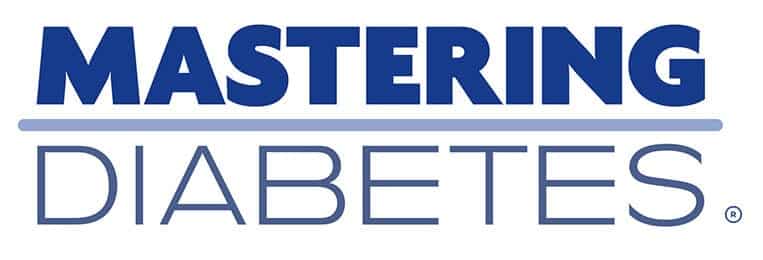
This easy-to-make colorful soup will warm you up and satisfy your taste buds.
This hearty soup is a celebration of vibrant vegetables, bursting with freshness and nourishment. From the creamy richness of lima beans and the sweetness of peas and corn to the earthy notes of cauliflower and kale, each spoonful is a delightful medley of tastes and textures.
With a base of low-sodium vegetable broth and a subtle hint of dill, this soup is not only a treat for your palate but also a nutritious choice for your body. Whether you're seeking a comforting bowl of warmth on a chilly evening or a boost of vitamins and minerals, our Lima Bean Pea Corn Soup has you covered.

Lima Beans: Diabetes-Friendly Nutrition in Every Bite
Lima beans, also known as butter beans, are a nutritious legume that can offer several health benefits and be a part of a balanced diet for individuals living with diabetes. Lima beans are a rich source of essential vitamins and minerals, making them a valuable addition to your diet. They provide:
Fiber: Lima beans are particularly high in dietary fiber, which can help stabilize blood glucose levels by slowing down the absorption of carbohydrates. Fiber also promotes digestive health and a feeling of fullness, which can assist in weight management—an important aspect of diabetes care.
Protein: Lima beans are a good plant-based source of protein, which is essential for muscle maintenance and overall health.
Folate: They contain folate (vitamin B9), a crucial nutrient for cell division and the synthesis of DNA.
Potassium: Lima beans are rich in potassium, a mineral that helps regulate blood pressure and supports heart health.
Magnesium: They provide magnesium, which is involved in various biochemical processes in the body, including glucose metabolism.
Lima beans have a moderate glycemic index (GI) and a low glycemic load (GL), which makes them a suitable choice for people with diabetes. The GI measures how quickly a carbohydrate-containing food raises blood glucose levels, while the GL takes into account both the GI and the portion size.
Lima beans have a GI typically ranging from 30 to 50, depending on factors like variety and cooking method. Their glycemic load is relatively low, indicating that they have a mild impact on blood glucose levels when consumed in reasonable portions.
Because of their moderate GI, low GL, and high fiber content, lima beans are considered a diabetes-friendly food. They can help maintain stable blood glucose levels when incorporated into balanced meals.

Peas: Tiny Gems of Nutrition for Diabetes Wellness
Peas are a highly nutritious legume with a diverse range of vitamins and minerals, making them a wholesome addition to a balanced diet, particularly for individuals living with diabetes. These little green powerhouses offer an array of essential nutrients.
First and foremost, peas are a reliable source of vitamin C, an antioxidant that supports immune health and promotes the formation of healthy skin. Additionally, they provide a noteworthy amount of vitamin K, a crucial nutrient for blood clotting and maintaining bone health.
The presence of folate, another vital vitamin, in peas further contributes to their nutritional value. Folate is essential for cell division and DNA synthesis, making it an important player in overall health.
One of the significant advantages of incorporating peas into a diabetes-friendly diet is their fiber content. Peas are rich in dietary fiber, which plays a pivotal role in regulating blood glucose levels. Fiber accomplishes this by slowing down the absorption of carbohydrates in the digestive tract, leading to a gradual release of glucose into the bloodstream. This, in turn, helps prevent sharp spikes in blood sugar levels after meals, which is particularly beneficial for those managing diabetes.
In terms of their glycemic impact, peas have a relatively low glycemic index and glycemic load, solidifying their suitability for individuals with diabetes. Peas typically fall within a GI range of 22 to 54, influenced by factors such as variety and preparation method. Their moderate GI, combined with their rich nutrient profile and fiber content, positions peas as an excellent choice for blood glucose management.
In summary, peas are a nutritional powerhouse, offering a variety of essential vitamins and minerals. Their fiber content and low GI and GL make them a diabetes-friendly food, helping to maintain stable blood glucose levels. When included as part of a well-balanced meal plan, peas provide both flavor and nutrition, contributing to a wholesome and satisfying dietary experience.

Cauliflower: A Diabetes-Friendly Superfood for Flavorful Health
Cauliflower is a versatile and nutrient-packed vegetable that can be a valuable addition to the diet of individuals living with diabetes. Here's an overview of the nutritional benefits of cauliflower, including its vitamins and minerals, and its suitability for diabetes management:
Cauliflower is a rich source of essential vitamins and minerals, making it a nutritious choice for overall health. It provides:
Vitamin C: Cauliflower is high in vitamin C, an antioxidant that supports immune function, skin health, and wound healing.
Vitamin K: It contains vitamin K, which is important for blood clotting and bone health.
Folate: Cauliflower provides folate (vitamin B9), a nutrient crucial for cell division and the synthesis of DNA.
Potassium: It is a good source of potassium, a mineral that helps regulate blood pressure and supports heart health.
Cauliflower has an exceptionally low glycemic index and glycemic load, which makes it an excellent choice for people with diabetes. Cauliflower's GI is near zero, indicating that it has almost no impact on blood glucose levels. Similarly, its GL is also very low, suggesting that it is unlikely to cause significant fluctuations in blood glucose levels.
Cauliflower's extremely low GI and GL, combined with its rich nutrient profile, make it a valuable component of a diabetes-friendly diet. It can be included in a variety of dishes to add flavor, texture, and nutrition without causing spikes in blood glucose levels.
Additionally, cauliflower is a versatile vegetable that can be used as a substitute for higher-carb foods in recipes, such as mashed cauliflower instead of mashed potatoes or cauliflower rice in place of traditional rice.
In summary, cauliflower is a nutrient-packed vegetable that offers a range of vitamins and minerals while being exceptionally low in terms of glycemic impact. Its versatility and low carbohydrate content make it an excellent choice for individuals with diabetes, helping to maintain stable blood glucose levels while contributing to a well-rounded and satisfying diet.


Lima Bean Pea Corn Soup
Ingredients
- 1/3 cup frozen or fresh lima beans
- 1/3 cup frozen or fresh peas
- 1 medium celery stalk - diced
- 1/3 cup frozen or fresh corn
- 1/3 cup cauliflower florets
- 2 1/2 cups low-sodium vegetable broth
- 1/2 tsp dill weed - or 1 fresh sprig
- 1/3 cup fresh green beans
- 1 small carrot - diced
- 1 small onion - diced
- 1/3 cup chopped kale - remove leaves from the stems
- 1 medium potato - cut into 1" cubes
- 3 tsp vegetable seasoning - (such as Mrs. Dash or another brand)
Instructions
- Place all ingredients in a large pot.
- Heat gradually to a boil. Reduce to a simmer. Simmer for 30 minutes or until vegetables are soft.
- Serve hot.

